Posted by: Ken @ 5:47 am
Readers have probably noticed that I take most of my photos in birding “patches” very close to home, mainly in the adjacent water conservation area that we call the West Miramar ESL (for its designation by the South Florida Water Management District as an environmentally sensitive land or area). Rather than chase after rarities, we usually wait for the birds to visit us. Pretty soon we will respond to our own migratory urge and try to catch up with them up north.
We enjoy the birds, but we also like being in the places where the birds are– mostly scarred remnants of former natural beauty, but places where we can briefly ignore the sounds of lawn mowers and leaf blowers and hear splashing on the lake and the songs of cardinals, yellowthroats and towhees. We like getting out early, around sunrise, and walking fast before stopping to watch and listen.
On the first of January this year I reflected on the fact that now I have lived a portion of my life in each of the past nine decades. This does not make me 90 years old, but it means that I was born in the middle of the Great Depression and accounts for my compulsion to get up and out and make the most of every day.
Depending upon the birds to come to us creates a sense of urgency during migration. We must be out there to greet them. Earlier this week we learned we could not predict the arrival of flocks of warblers in our neighborhood. Trying to anticipate the perfect morning for birding during migration, I keep track of the weather radar. So far there has been little correlation between the abundance of migrants in our neighborhood and the density of the flocks that appear on the radar screen.
For example, on April 14 we saw nine warbler species, as reported in our previous blog. That night the radar looked very promising. It appeared that migrating birds had piled up on the northern coast of Cuba and had begun their flight across the Straits to Florida at sunset. We hoped that the next morning would be even better for warblers.
Here is the Key West radar image covering the period between 9:30 and 10:38 PM EDT on April 14th:
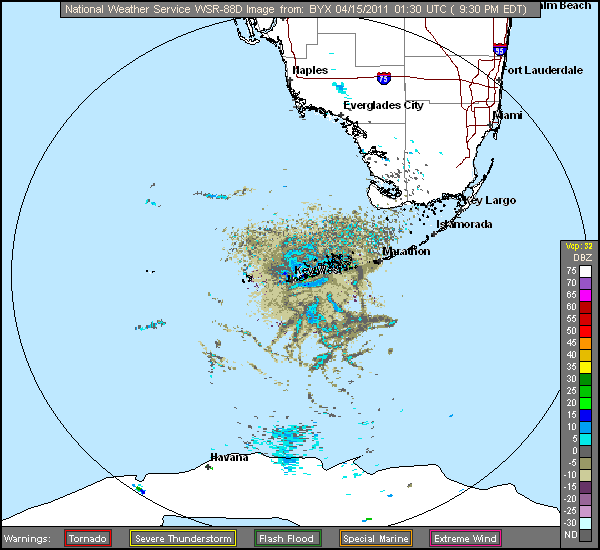
Angel and Mariel track migrants on radar in their blog, Badbirdz2. They reported “Heavy Migration Over Florida” and their overnight radar loops documented the continued passage of migrating flocks over south Florida, including our home, into the early morning hours. We got out early, expecting to be surrounded by colorful warblers. I hid inside the “hammock” for two hours, and saw many, many catbirds that may have helped cause the radar echoes, but not a single warbler, or other migrant!
Before Mary Lou abandoned me at the “make-believe hammock,” we had visited the lake at the far end of the unpaved road into our patch, where we found a small flock of Least Terns. A pair of Least Terns posed nicely on a rock: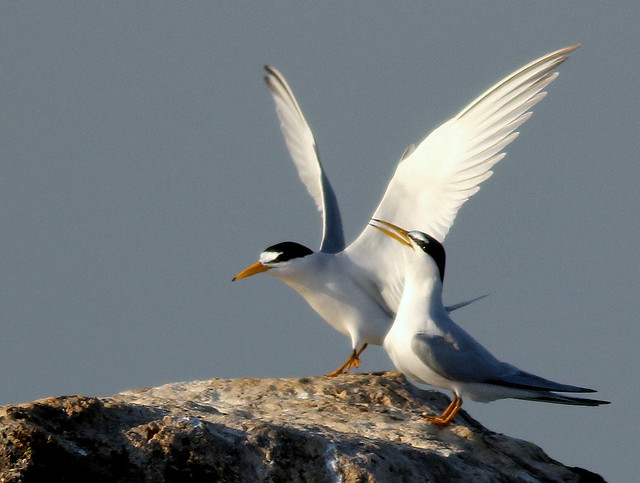
They flew back and forth in front of us, allowing me to practice taking in-flight telephotos with my new Canon 60D: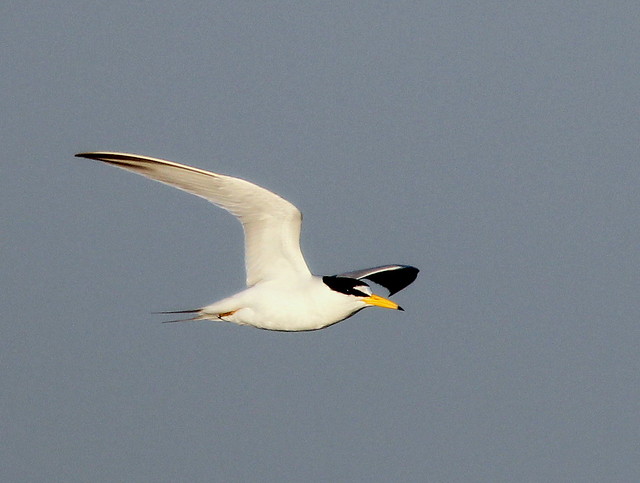
The smallest of the terns, the Least Tern has a proportionally long bill and short tail, and in breeding plumage has a black cap and sharply contrasting white forehead:
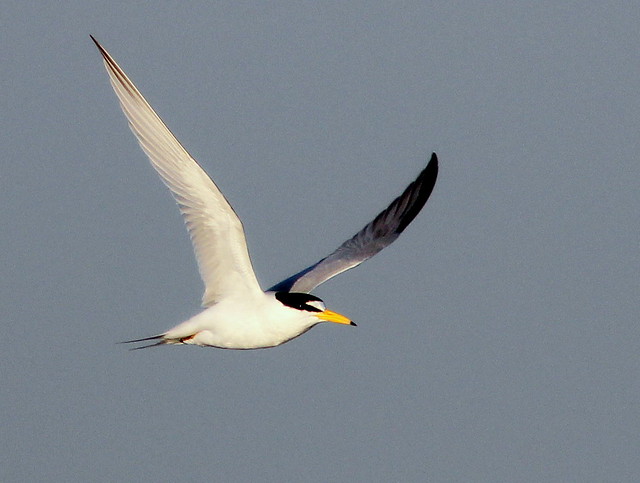
I caught a Red-winged Blackbird in mid-song, his partly spread wings showing off bright red epaulets: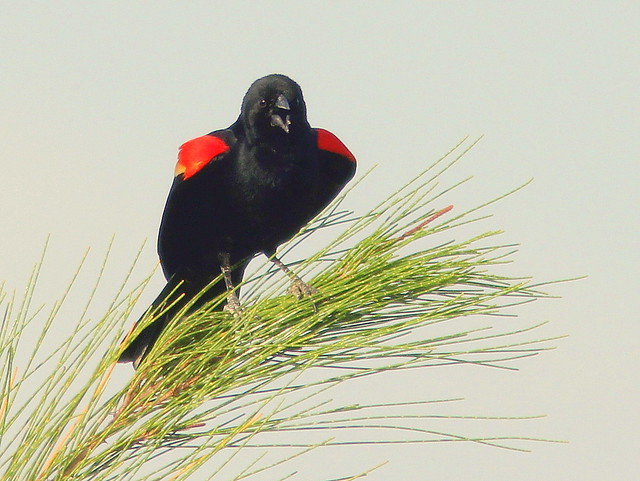
The light was behind this Tricolored Heron as it watched us warily:

A Green Heron joined the terns along the edge of the lake:
Two days earlier, I was so engrossed in photographing the terns that I forgot a cardinal rule– never take a step without first checking the surroundings. Out of the corner of my eye, I caught the slow movement of a snake, only about three feet away.
It was a poisonous Cottonmouth water moccasin:
Of course I stepped back as the snake coiled into a defensive posture. It opened its mouth and began to regurgitate what looked like the tail end of a siren (a common legless amphibian). This may have been in response to the stress created by my disturbance:
Like cats and other nocturnal predators, all the North American poisonous snakes (except for the Coral Snake) have elliptical pupils. This is an adaptation to night vision, allowing them to protect their sensitive eyes by shutting out almost all the light if necessary:
Snakes are fascinating creatures. Cottonmouths eat a great deal of carrion, and are not aggressive. They are inconspicuous, and about the only way to get bitten is to touch one or step on it unawares. As a sad footnote, when we returned to this spot we found a Cottonmouth, probably this same snake, crushed by boulders:
Yes, it is poisonous, and some guy now thinks he’s a hero, but I don’t think that the world is made any better by senseless killing.
As a kid, I used to step on any ant I saw on the sidewalk, for sport, or maybe to make it rain.
Such a habit may have persisted in my subconscious mind. Several years ago, while leading a group of 8 to 10 year old kids on a nature walk at Rio Grande Nature Center in Albuquerque, I casually stepped on an ant– I must admit it was an intentional act.
One of the kids immediately asked, “Why did you do that?”
“Do what?”
“Step on that ant.”
I could only reply, “It was wrong for me to do that– the ant was minding its own business and wasn’t doing anything to hurt me.”
Why did I do that? It was a simple but profound lesson for me. I had extinguished a tiny spark of consciousness, and my universe had been diminished, be it ever so slightly.













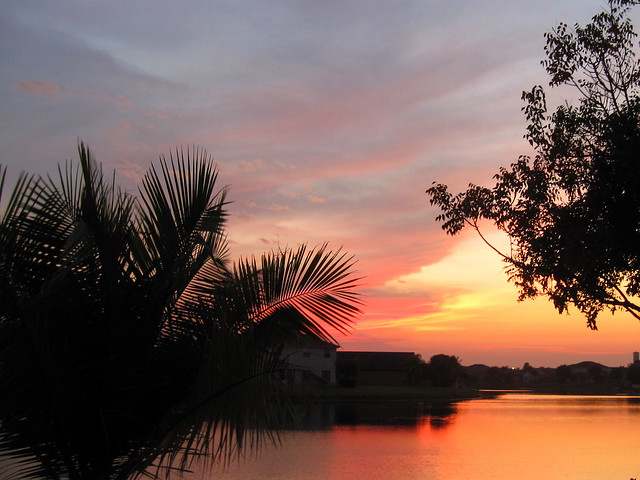
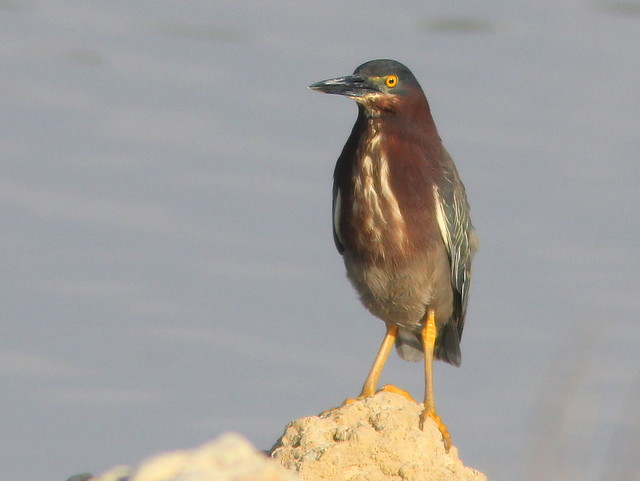

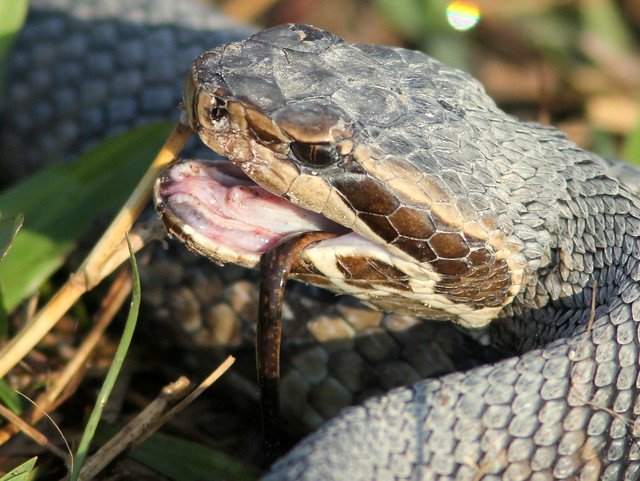
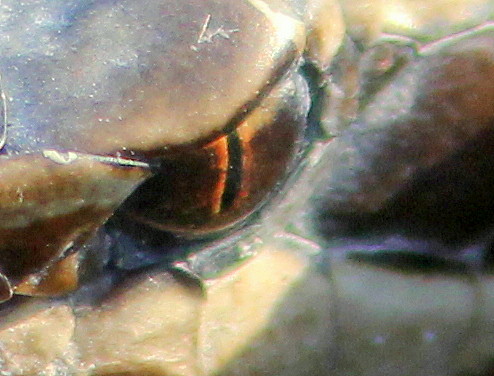
April 27th, 2011 at 7:10 am Great sequence!! Enjoyed photos of the cottonmouth. Boom & Gary of the Vermilon River, Canada.
April 27th, 2011 at 9:42 am Beautiful images of some great wildlife.
April 27th, 2011 at 10:11 am A great post and really beautiful images. Well done!
April 27th, 2011 at 10:42 am Excellent post and photos! Love the Green Heron.
April 27th, 2011 at 4:52 pm Beautiful sunrise, and a beautiful shot of the Green Heron Ken. A sad footnote about the snake. I agree; killing it achieved nothing.
April 27th, 2011 at 6:00 pm I find your sensitivity to nature after you have lived these many long years to be quite refreshing and well worth noting. Our “intentions” as you express it are sometimes the very crux of the matter. You are reaching deeply into the mystery. Your D60 rocks the house. Your pictures are superb. I would like to know what lenses your favoring at the moment. Watching birds on radar? That is so cool. I wish there was a globe that showed the bird migration patterns of our planet. Lovely, intense post Sir! ;-)WBW
April 27th, 2011 at 6:31 pm Great post Ken! The Tern photos are amazing, especially that shot of the two on the rock. Just beautiful. The Cottonmouth photos are incredible too and your concern for life and nature is commendable. It really helps to know nature for people to understand how to interact with their surroundings. From the mouths of babes sometimes we can reflect on our own choices. Thank you for sharing this wonderful feeling.
April 27th, 2011 at 9:15 pm Super tern photos..and the cotton mouth Amazing looking snake…Tread lightly~
April 27th, 2011 at 10:26 pm It’s so interesting that you can actually see the migrating birds on the radar returns — very cool! and really nice shots of the terns, they are beautiful!
April 28th, 2011 at 9:09 am What a lovely and thought-provoking post, Ken! Your photography is beautiful.
June 21st, 2011 at 3:14 pm I enjoyed this post immensely, as all the others. Do you think the snake was starting to shed its skin, causing it to be sluggish. Perhaps that is why it didn’t get away from you before you almost stepped on it, and allowed it to be killed by well meaning people.